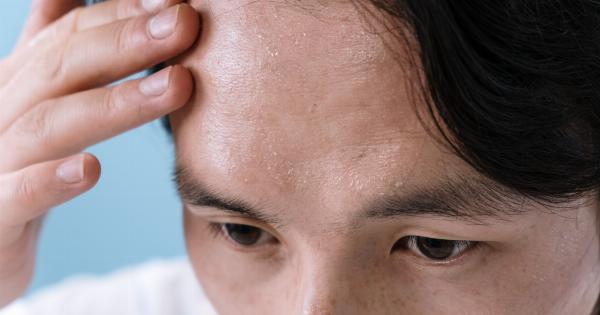As we age, our body and mind undergo various changes, which can negatively affect our appearance. One of the most common issues that individuals face with aging is hair loss or hair thinning.
Hair loss can happen due to various reasons, such as genetics, stress, hormonal changes, and medical conditions. However, regardless of the cause, hair loss can significantly impact our self-esteem and confidence.
The good news is that there are several solutions available to restore hair to its former glory. One of the most effective and permanent solutions is hair transplantation.
Hair transplantation involves transplanting hair follicles from a donor site, which is usually the back of the head, to the bald or thinning areas on the scalp. The surgeon extracts hair follicles from the donor site and implants them into the recipient site, creating a natural-looking, fuller head of hair.
Types of Hair Transplantation
There are two types of hair transplantation methods that are widely used:.
Follicular Unit Transplantation (FUT)
FUT, also known as strip harvesting, involves extracting a strip of skin from the donor site, which is then dissected under a microscope to create follicular units. These follicular units are then implanted into the recipient site.
FUT is considered an efficient method as it allows the surgeon to transplant a large number of hair follicles in a single session.
Follicular Unit Extraction (FUE)
FUE is a less invasive method than FUT. In this method, the surgeon extracts hair follicles individually from the donor site and implants them into the recipient site without creating a strip of skin.
FUE results in minimal scarring and quicker healing time compared to FUT. However, as the process involves the extraction of individual hair follicles, the number of follicles transplanted per session is lower.
Benefits of Hair Transplantation
Hair transplantation has numerous benefits, which include:.
Natural-looking Results
One of the biggest advantages of hair transplantation is that it provides natural-looking results. Skilled surgeons use their expertise to design a hairline that complements the patient’s facial features, giving them a youthful appearance.
Permanent Solution
Hair transplantation is a permanent solution to hair loss. The transplanted hair follicles continue to grow and thrive in the recipient site, providing a lifelong solution.
Low Maintenance
The transplanted hair requires minimal maintenance, making it an ideal solution for individuals who do not want to spend a lot of time and effort styling their hair every day.
After the transplantation, the hair needs to be washed and combed like natural hair.
No Side Effects
Hair transplantation is a safe and effective procedure with no significant side effects. The patient may experience some mild discomfort or swelling in the first few days after surgery, which can be managed with painkillers.
Candidates for Hair Transplantation
Not everyone is a suitable candidate for hair transplantation. The following factors determine an individual’s suitability for hair transplantation:.
Extent of hair loss
The extent of hair loss is a crucial factor in determining an individual’s suitability for hair transplantation. Individuals with severe hair loss may not have enough donor hair follicles to cover the bald or thinning areas on the scalp.
Age
Younger individuals may not be ideal candidates for hair transplantation, as it is difficult to predict the extent of hair loss in the future. Hair transplantation is recommended for individuals who have stabilized their hair loss.
Overall Health
Individuals with underlying medical conditions, such as diabetes and heart disease, may not be suitable for hair transplantation. The surgeon will evaluate the patient’s overall health before recommending the procedure.
Risks and Complications
Like any surgical procedure, hair transplantation comes with some risks and complications. The following are some of the potential risks and complications:.
Bleeding
Some bleeding may occur during the procedure, which is typical of any surgical procedure. However, excessive bleeding can delay the surgery and increase the risk of infection.
Infection
There is a risk of infection after hair transplantation. The surgeon may prescribe antibiotics to prevent infection.
Scarring
Scarring is another potential complication. However, with proper postoperative care, the scarring can be minimized.
Unnatural-looking Results
If the surgeon has insufficient skill and experience, the result may look unnatural, with clusters of hair follicles that are too close together, making it look like a patchwork.
Before and After Care
Proper pre-operative and post-operative care is essential for the success of hair transplantation. The following are some essential pre-operative and post-operative care tips:.
Before the Procedure
- Avoid smoking and alcohol consumption for at least two weeks before the surgery.
- Avoid blood-thinning medications for one week before the surgery as they increase the risk of bleeding during the procedure.
- Do not color your hair before the procedure.
After the Procedure
- Avoid touching or rubbing the transplanted area for at least a day after surgery.
- Avoid strenuous activities, such as heavy lifting, for at least two weeks after the surgery.
- Avoid exposing the transplanted area to direct sunlight for at least a month after the surgery.
- Use a mild shampoo to wash the hair gently for the first few weeks after surgery.
Conclusion
Hair transplantation is an effective and permanent solution to hair loss. It provides natural-looking results and requires minimal maintenance.
The success of hair transplantation depends on various factors, such as the extent of hair loss and the overall health of the individual. Proper pre-operative and post-operative care is essential for the success of hair transplantation.

























